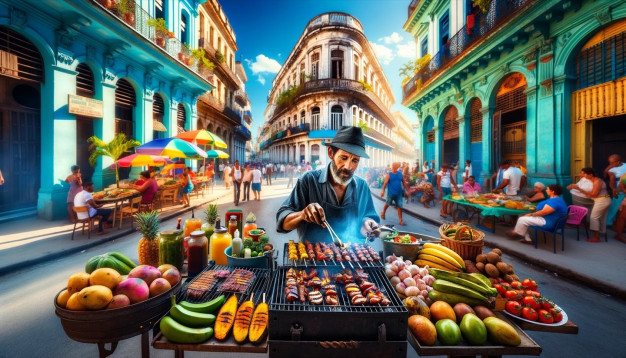Cuba Travel Guide
Comprehensive Cuba guide: Getting there, attractions, costs, and more
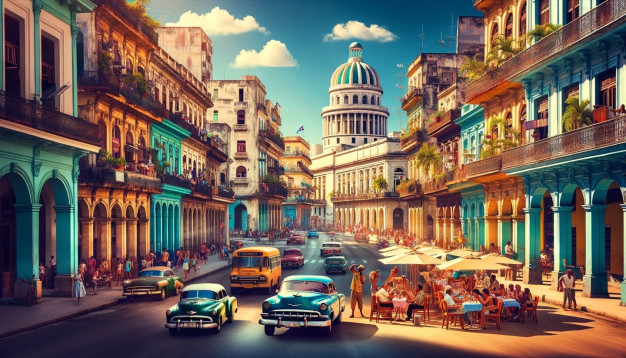
Reasons to Visit Cuba
Cuba is a captivating destination that offers a unique blend of history, culture, and natural beauty. Here are a few compelling reasons to visit this extraordinary country:
- Rich History: Cuba is steeped in history, with its colonial architecture, vintage cars, and revolutionary heritage. Explore the cobblestone streets of Havana’s Old Town, visit the historic site of the Bay of Pigs, or immerse yourself in the revolutionary spirit at the Museum of the Revolution.
- Beautiful Beaches: With its pristine white-sand beaches and crystal-clear turquoise waters, Cuba is a paradise for beach lovers. From the popular resorts of Varadero to the secluded shores of Cayo Coco, you’ll find a beach to suit every taste.
- Vibrant Culture: Experience the lively music and dance scene in Cuba, where salsa rhythms fill the air and vibrant street performances bring the cities to life. Don’t miss the chance to visit local art galleries, indulge in delicious Cuban cuisine, and interact with the friendly locals.
- Unspoiled Nature: Cuba is home to stunning natural landscapes, from lush tobacco fields in Viñales to the dramatic mountains of the Sierra Maestra. Explore the breathtaking Viñales Valley, hike in the Topes de Collantes National Park, or dive into the colorful underwater world of the Jardines del Rey archipelago.
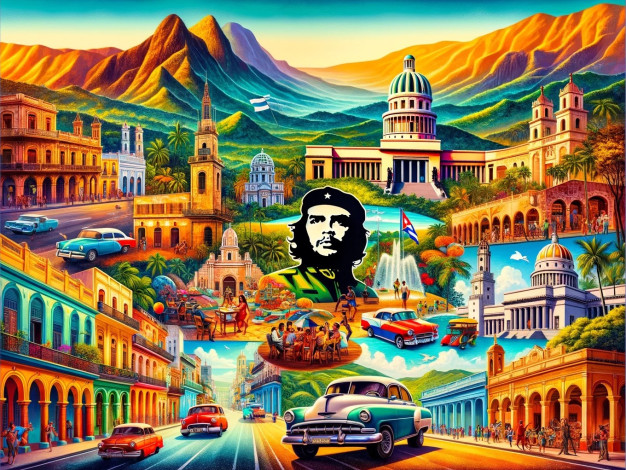
Best Time to Visit Cuba
Weather
Cuba has about the same temperatures all over its surface. The south-eastern part of the island, where the city of Santiago de Cuba is located, only enjoys the highest temperatures a little longer. Thus, mild temperatures, which are between 24°C and 28°C, settle in the western part of the island (where Havana is located) from November to March. They give way to the highest temperatures, 30°C on average, from April to October.
The eastern part of the island benefits from mild temperatures in January and February and the thermometer shows higher temperatures from March to December.
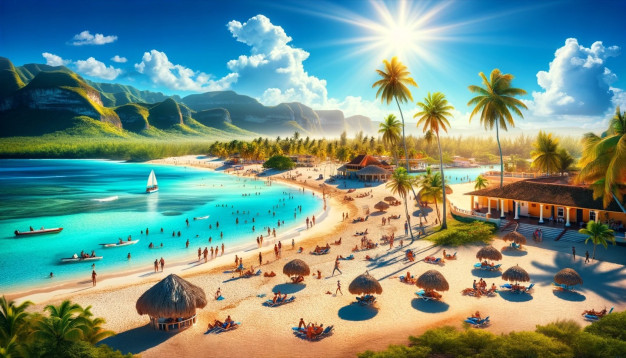
Touristic Seasons
Cuba experiences two main touristic seasons:
- High Season: From December to April, Cuba sees a surge in tourism due to pleasant weather and international holidays. During this period, popular tourist destinations can be crowded, and accommodation prices tend to be higher. It’s advisable to book your accommodations well in advance if you plan to visit during this time.
- Low Season: From May to November, Cuba experiences a decrease in tourist numbers. This period coincides with the rainy season and the potential for hurricanes. While you may encounter some rain, you’ll also find better deals on accommodations and fewer crowds at popular attractions.
Holidays
Cuba celebrates several holidays and festive days throughout the year. These events offer a unique opportunity to experience the country’s rich culture and traditions. Here are some of the main events:
Festive Days
- New Year’s Day: January 1st is a public holiday celebrated with fireworks, parties, and cultural events across the country.
- Labor Day: May 1st is celebrated with parades and rallies honoring workers’ rights.
- Revolution Day: July 26th commemorates the start of the Cuban Revolution in 1953. Festivities include parades, speeches, and cultural activities.
Main Events
Here’s a calendar of the main events and festivals in Cuba month by month:
- January: Havana Jazz Festival, celebrating jazz music with performances by local and international artists.
- February: Festival del Habano, a cigar festival held in Havana, showcasing the country’s famous cigars.
- March: Habana Vieja: Ciudad en Movimiento, a cultural festival featuring dance, theater, and music performances in Old Havana.
- April: Romerias de Mayo, a festival in Holguin celebrating Cuba’s cultural heritage through music, dance, and art.
- May: Festival Internacional de Danza en Paisajes Urbanos, a dance festival held in various cities showcasing contemporary dance.
- June: Corpus Christi, a religious festival celebrated with processions, music, and dancing in Camagüey.
- July: Santiago de Cuba Carnival, one of the country’s most vibrant and colorful carnivals with parades and street parties.
- August: Fiesta del Fuego, a week-long festival in Santiago de Cuba celebrating Caribbean culture through music, dance, and theater.
- September: Festival Internacional de Ballet de La Habana, a prestigious ballet festival attracting world-renowned dancers.
- October: Havana International Film Festival, a showcase of Latin American and Caribbean cinema.
- November: Jazz Plaza International Festival, a renowned jazz festival held in Havana, featuring top international and Cuban jazz musicians.
- December: Parrandas de Remedios, a traditional festival in Remedios with fireworks, parades, and music.
These are just a few examples of the many events and festivals that take place in Cuba throughout the year. Be sure to check the specific dates and locations closer to your travel dates for an up-to-date calendar of events.
Circuit Ideas in Cuba
Whether you have a weekend, a week, or a month to spare, Cuba offers a variety of circuit ideas to suit different travel durations. Here are some suggested itineraries:
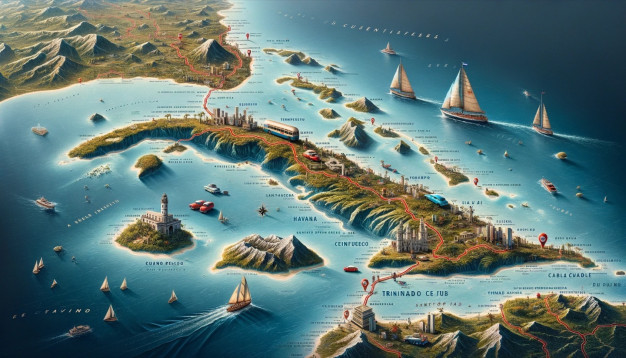
1 Weekend in Cuba
- Day 1: Arrive in Havana, explore Old Havana’s historic sites, such as Plaza de la Catedral and Castillo de la Real Fuerza. Enjoy an evening of live music and dance at a local bar.
- Day 2: Take a classic car tour of Havana, visiting iconic landmarks like the Capitolio and Revolution Square. In the afternoon, relax on the beaches of Playas del Este or visit the vibrant neighborhood of Vedado.
1 Week in Cuba
- Day 1-2: Start in Havana and explore the city’s highlights. Visit the Museum of the Revolution, stroll along the Malecon, and enjoy the lively atmosphere of the nightlife in Vedado.
- Day 3-4: Head to Viñales and discover the picturesque tobacco fields and limestone mogotes. Take a guided tour of a tobacco plantation and explore the stunning Viñales Valley on horseback.
- Day 5-6: Travel to Trinidad, a UNESCO World Heritage Site known for its well-preserved colonial architecture. Wander through the colorful streets, visit the Museo Romántico, and enjoy the local music scene.
- Day 7: Return to Havana and spend your last day exploring any missed attractions or shopping for souvenirs in the local markets.
10 Days in Cuba
- Day 1-2: Begin in Havana and spend two days exploring the city’s historical sites, vibrant neighborhoods, and lively music scene.
- Day 3-4: Take a day trip to the stunning beaches of Var
adero and enjoy some relaxation by the sea.
- Day 5-7: Head to Cienfuegos and Trinidad, stopping along the way to explore the Bay of Pigs and the colonial city of Santa Clara. In Cienfuegos, visit the Palacio de Valle and the picturesque Punta Gorda.
- Day 8-9: Travel to Santiago de Cuba, immersing yourself in the city’s vibrant Afro-Cuban culture and visiting the historic sites like Castillo del Morro.
- Day 10: Return to Havana, explore any missed attractions, and bid farewell to the island.
2 Weeks in Cuba
- Day 1-3: Start in Havana, taking your time to explore the city’s neighborhoods, museums, and cultural attractions.
- Day 4-5: Travel to Viñales and spend a couple of days exploring the tobacco fields, caves, and stunning landscapes of the region.
- Day 6-7: Head to Cienfuegos and Trinidad, visiting the Bay of Pigs and Santa Clara along the way. Explore the colonial charm of Trinidad and enjoy the beautiful beaches nearby.
- Day 8-10: Journey to Camagüey, a city known for its well-preserved colonial architecture and artistic spirit. Explore the winding streets and visit local art galleries.
- Day 11-14: Continue to Santiago de Cuba, immersing yourself in the city’s vibrant music scene, visiting historic sites, and enjoying the local cuisine. Take a day trip to the stunning beaches of the Baconao National Park.
3 Weeks in Cuba
- Day 1-4: Begin in Havana and spend a few days exploring the city’s diverse neighborhoods, historical sites, and cultural attractions.
- Day 5-7: Travel to Viñales and immerse yourself in the natural beauty of the region. Take guided hikes, visit tobacco plantations, and explore the stunning caves.
- Day 8-10: Head to the north coast and visit the beautiful colonial city of Santa Clara. Explore the Che Guevara Mausoleum and Museum and learn about the revolutionary history of Cuba.
- Day 11-13: Continue to Trinidad and Cienfuegos, exploring the charming streets, visiting historic sites, and enjoying the local music scene.
- Day 14-18: Journey to the eastern part of the island and visit the cities of Camagüey and Santiago de Cuba. Experience the vibrant Afro-Cuban culture, visit historic sites, and soak up the lively atmosphere.
- Day 19-21: Return to Havana and spend your last few days revisiting your favorite spots, shopping for souvenirs, and enjoying the vibrant nightlife.
1 Month in Cuba
- Day 1-5: Begin in Havana and spend five days exploring the city’s diverse neighborhoods, museums, historical sites, and cultural attractions.
- Day 6-9: Travel to Viñales and immerse yourself in the stunning natural beauty of the region. Take guided hikes, visit tobacco plantations, and explore the magnificent caves.
- Day 10-13: Head to the northern coast and visit Santa Clara, Cienfuegos, and Trinidad. Explore the historical sites, colonial architecture, and vibrant music scene.
- Day 14-18: Continue eastward to Camagüey, Santiago de Cuba, and Baracoa. Experience the vibrant Afro-Cuban culture, visit historic sites, and indulge in the local cuisine.
- Day 19-21: Visit Holguin and explore its pristine beaches, including Guardalavaca and Playa Esmeralda.
- Day 22-25: Discover the natural beauty of the Topes de Collantes National Park, hike to the El Nicho Waterfalls, and explore the colonial city of Sancti Spiritus.
- Day 26-30: Return to Havana and spend your last few days revisiting your favorite spots, shopping for souvenirs, and enjoying the vibrant nightlife.
Places to Visit in Cuba
Must-See
Cuba is home to numerous remarkable destinations. Here are ten must-see places to visit:
- Havana: Explore the captivating capital city with its vibrant neighborhoods, historic sites, and lively music scene.
- Viñales: Discover the picturesque tobacco fields, limestone mogotes, and underground caves in this scenic valley.
- Trinidad: Step back in time as you wander through the well-preserved colonial streets and enjoy the vibrant music scene.
- Cienfuegos: Admire the elegant French-inspired architecture and visit the stunning Palacio de Valle.
- Varadero: Relax on the pristine white-sand beaches and swim in the crystal-clear waters of this popular resort town.
- Santiago de Cuba: Immerse yourself in the Afro-Cuban culture, explore historic sites, and visit the famous Castillo del Morro.
- Camagüey: Get lost in the labyrinthine streets of this charming city known for its well-preserved colonial architecture.
- Baracoa: Visit the oldest city in Cuba, surrounded by lush mountains and pristine beaches.
- Topes de Collantes: Explore the stunning national park with its lush forests, hiking trails, and waterfalls.
- Holguin: Discover the picturesque beaches of Guardalavaca and explore the vibrant city known as the “City of Parks.”
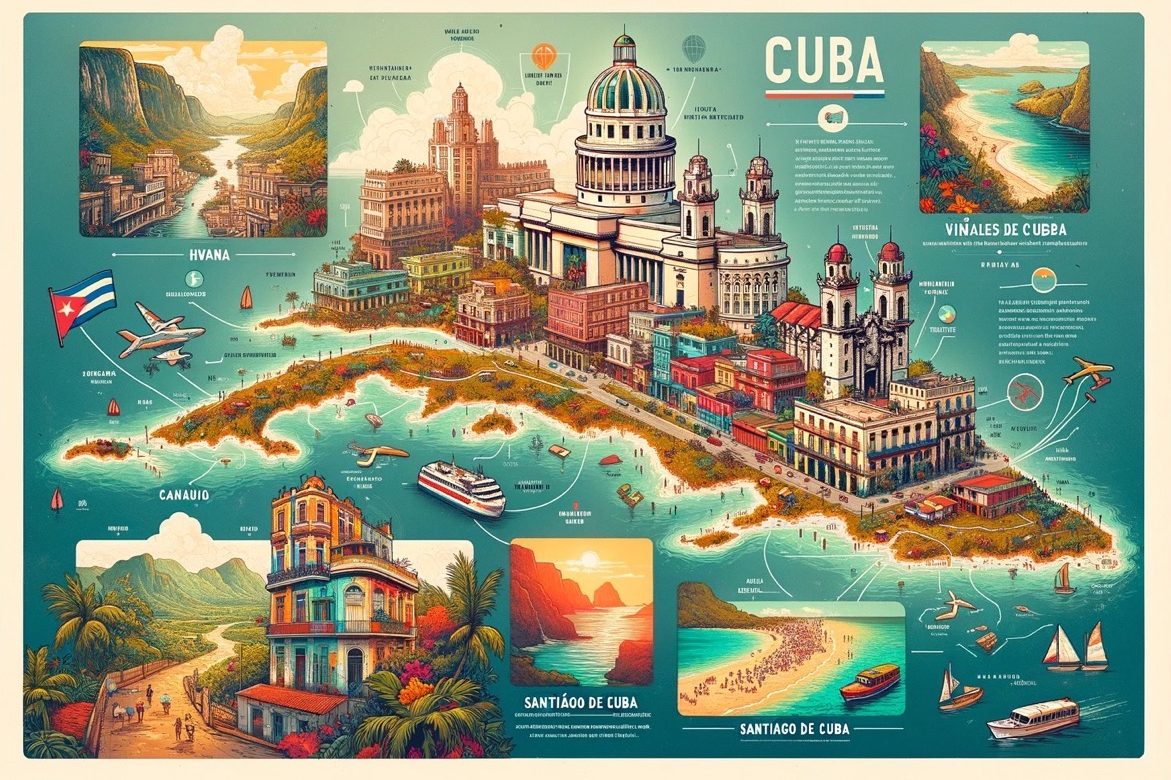
Off the Beaten Track
For those seeking unique and less-touristy experiences, here are ten off-the-beaten-track spots to visit:
- Gibara: A quaint coastal town known for its colonial architecture and the annual Cine Pobre Film Festival.
- Soroa: Explore the enchanting orchid gardens and hike to the stunning Soroa Waterfall.
- Las Terrazas: Discover the sustainable community nestled in the Sierra del Rosario, offering eco-tourism activities and natural beauty.
- Matanzas: Known as the “Athens of Cuba,” this city boasts beautiful neoclassical architecture and a thriving arts scene.
- Cayo Levisa: Escape to this secluded island paradise, known for its pristine beaches and excellent diving spots.
- Guanahacabibes Peninsula: Explore the untouched natural beauty of this biosphere reserve, home to diverse flora and fauna.
- Santa Clara: Visit the Che Guevara Mausoleum and Museum and learn about the iconic revolutionary’s life and legacy.
- Pinar del Río: Discover the unspoiled beauty of the region, with its lush landscapes, tobacco fields, and dramatic mountains.
- Camilo Cienfuegos National Park: Go off the beaten track and explore this remote national park, perfect for nature lovers and hikers.
- Remedios: Experience the authentic charm of this colonial town and its lively Parrandas festival in December.
Budget for Traveling to Cuba
Traveling to Cuba can be affordable, but it’s important to plan your budget carefully. Here’s some information about the cost of things in the country:
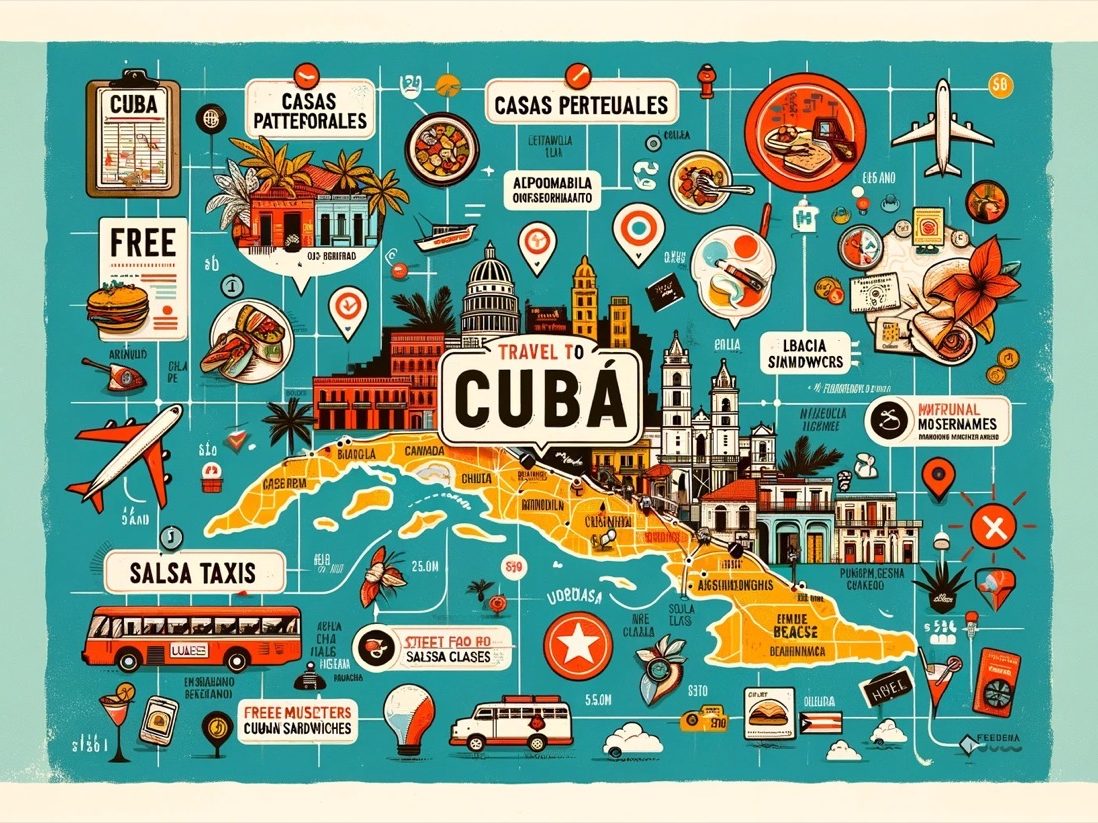
Hotels
Cuba offers a range of accommodation options, from budget-friendly casas particulares (private homestays) to luxury hotels. Prices can vary depending on the location and the level of comfort you seek. On average, a night in a casa particular can cost between $25 to $50 USD, while mid-range hotels may range from $80 to $150 USD per night. Luxury hotels can cost upwards of $200 USD per night.
Meals
Cuban cuisine is known for its flavorful dishes and generous portions. Eating at local restaurants and paladares (privately owned restaurants) can be affordable. A typical meal at a local restaurant can cost between $5 to $15 USD per person, depending on the location and type of establishment. Fine dining experiences in upscale restaurants may cost around $30 USD or more per person.
Transportation
- Taxis: Taxis are a convenient way to get around in Cuba. In cities like Havana, short taxi rides within the city center may cost around $5 to $10 USD. Longer rides or trips to other cities can range from $50 to $100 USD or more, depending on the distance.
- Rental Cars: Renting a car in Cuba is an option for those who want more flexibility in their travels. Rental cars can cost $50 to $100 USD per day, depending on the type of vehicle and the rental company.
- Public Transportation: Public buses, known as “guaguas,” are an inexpensive way to travel between cities and towns in Cuba. Prices can range from a few cents to a few dollars, depending on the distance.
Excursions
Taking guided tours and excursions can enhance your Cuba travel experience. The cost of tours varies depending on the duration, location, and activities included. Day tours can range from $30 to $100 USD or more per person, while multi-day tours can cost $500 USD per day or more, depending on the itinerary and level of comfort.
Money in Cuba
Currency
Cuba has been using a single currency, the Cuban Peso (CUP), since January 1, 2021, when the government ended the dual currency system that had been in place for several decades. The CUP is the only legal currency in Cuba, used for all domestic transactions, wages, and goods and services.
Exchange rate
The exchange rate for foreign currencies is determined by the state-run CADECA (Casas de Cambio) exchange houses and may fluctuate depending on economic policies and conditions. Visitors to Cuba need to exchange their foreign currency for CUP at these official exchange houses, banks, or at the airport.
- CADECA may provide an exchange rate of 110 CUP to 1 USD/EUR.
- Exchanging currency on the street may yield a rate of 220 CUP per USD/EUR.
- Card payments may apply the outdated exchange rate of 25 CUP per 1 USD/EURO. Not an option…
- Latest un-official change rate can be consulted here : El Toque
Paying
In Cuba, cash is king. Credit and debit cards issued by U.S. banks are generally not accepted due to the ongoing restrictions, so it’s important to carry enough cash with you for your expenses. Foreign currencies are preferable for tourist transactions including transport, excursions, and accommodation. Convert currencies for local transactions such as street food and markets.
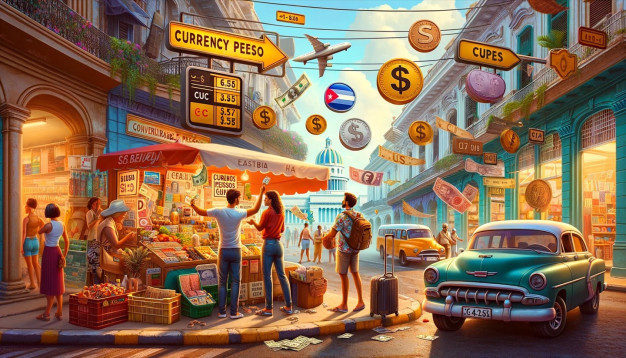
ATMs
Don’t rely on your card. Most ATMs do not accept foreign cards or may have limited cash availability. It’s advisable to carry enough cash with you or plan your ATM withdrawals accordingly. Moreover, you might encounter an exchange rate tenfold less favorable than that available on the street.
Cash
It’s recommended to carry cash in Cuba, as credit cards are not widely accepted. Euros, British pounds, Canadian dollars, and Swiss francs are commonly accepted and can be easily exchanged in Cuba. U.S. dollars are subject to an additional 10% exchange fee.
Haggling
Haggling is not common in Cuba, especially in official establishments like shops and restaurants. Prices are generally fixed, and attempts to negotiate may not be well-received. However, in some informal settings such as street markets, a friendly negotiation may be possible.
Tipping
Tipping is customary in Cuba, and it’s appreciated for good service. Here are some general guidelines on how much to give:
How much to give?
- Drivers: For taxi rides, it’s common to round up the fare or add a small tip of $1 to $3 CUC depending on the distance and service.
- Staff & Assistants (Muleteers, Chief Cook): When participating in guided tours or trekking expeditions, it’s customary to tip the staff and assistants who provide services. Depending on the duration and level of service, a tip of $5 to $10 CUC per day is appropriate.
- Guides: For guided tours, a tip of $5 to $10 CUC per day is customary, depending on the quality of the service and the length of the tour.
Restaurants & Bars
In restaurants and bars, it’s customary to leave a tip of 10% to 15% of the total bill, depending on the level of service. Some establishments may include a service charge in the bill, so it’s important to check before leaving an additional tip.
Before Leaving to Cuba
Visas and Entrance Requirements to Travel to Cuba
To enter Cuba, most travelers need a tourist visa, also known as a tourist card. The visa allows you to stay in Cuba for up to 30 days. You can obtain a tourist visa through your travel agency, airline, or Cuban consulate. It’s important to check the specific visa requirements for your country of citizenship and ensure that your passport is valid for at least six months beyond your planned departure date.
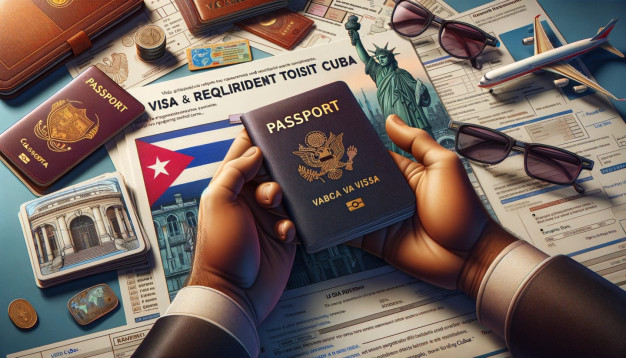
Useful Addresses
Here are some useful addresses and contacts for embassies in Cuba:
US Embassy in Cuba
- Address: Calzada between L & M Streets, Vedado, Havana
- Phone: +53 7839 4100
- Email: havanaconsularinfo@state.gov
- Website: https://cu.usembassy.gov/
Canadian Embassy in Cuba
- Address: Calle 30 No. 518, Miramar, Havana
- Phone: +53 7204 2516
- Email: havan@international.gc.ca
- Website: https://www.canadainternational.gc.ca/cuba/
UK Embassy in Cuba
- Address: Torre Espacio, Calle G, Entre 5ta Avenida y Calle 14, Miramar, Havana
- Phone: +53 7204 2516
- Email: consularenquirieshavana@fco.gov.uk
- Website: https://www.gov.uk/world/organisations/british-embassy-havana
French Embassy in Cuba
- Address: Calle 14 No. 312, Entre 3ra y 5ta Avenida, Miramar, Havana
- Phone: +53 7204 2516
- Email: https://cu.ambafrance.org/
Swiss Embassy in Cuba
- Address: Calle 34 No. 714, Entre 7ma y 71, Miramar, Havana
- Phone: +53 7204 2516
- Email: hav.vertretung@eda.admin.ch
- Website: https://www.eda.admin.ch/havana
Belgium Embassy in Cuba
- Address: Calle 34 No. 714, Entre 7ma y 71, Miramar, Havana
- Phone: +53 7204 2516
- Email: havana@diplobel.fed.be
- Website: https://cuba.diplomatie.belgium.be/
Vaccines
Generally, no specific vaccines are required to enter Cuba. However, it’s recommended to be up to date on routine vaccinations, including measles, mumps, rubella, diphtheria, tetanus, and pertussis. It’s also advisable to consider vaccines for hepatitis A and typhoid, depending on your travel plans and personal health status. Before traveling to Cuba, it’s advisable to check the vaccination requirements for your country.
Health Recommendations
- Mosquito-borne Diseases: Cuba is a tropical country, and there is a risk of mosquito-borne diseases such as dengue, Zika, and chikungunya. Take precautions to prevent mosquito bites by using insect repellent, wearing long sleeves and pants, and staying in accommodations with air conditioning or mosquito nets.
- Safe Drinking Water: It’s advisable to drink bottled water or use filtered water for drinking and brushing your teeth. Avoid drinking tap water to prevent stomach illnesses.
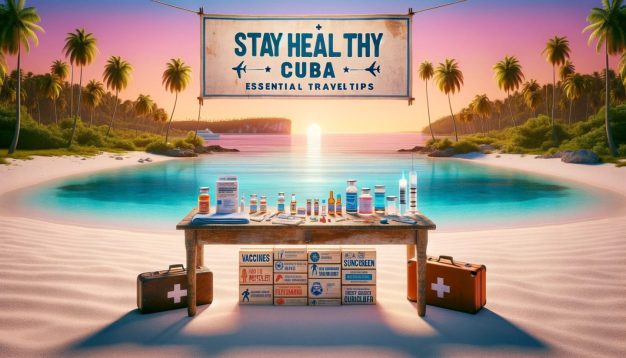
Packing List
Here are some essential items to include in your packing list for Cuba:
- Light Clothing: Pack lightweight and breathable clothing suitable for the tropical climate. Don’t forget to include a hat, sunglasses, and sunscreen.
- Insect Repellent: Protect yourself from mosquitoes and other insects by packing an effective insect repellent.
- Comfortable Shoes: Bring comfortable shoes for walking and exploring, as well as sandals or flip-flops for the beach.
- Travel Adapter: Cuba uses a variety of electrical outlets, so it’s recommended to bring a travel adapter that can fit the different plug types.
- Medications: If you take prescription medications, ensure you have an adequate supply for the duration of your trip. It’s also advisable to bring a small first aid kit with basic supplies.
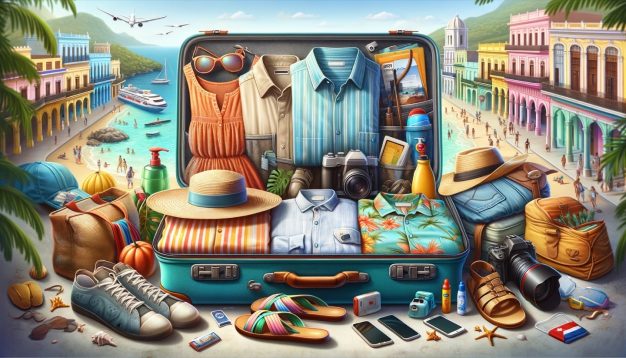
Safety in Cuba
Cuba is generally a safe destination for travelers. However, it’s important to take standard safety precautions:
- Be Aware of Your Surroundings: Stay alert and aware of your surroundings, especially in crowded areas and tourist spots.
- Secure Your Belongings: Keep your belongings secure and be mindful of pickpockets in crowded areas. Use hotel safes to store valuables.
- Avoid Isolated Areas at Night: As with any destination, it’s advisable to avoid walking alone in isolated areas at night.

Useful Phone Numbers
In case of emergencies, here are some useful phone numbers to keep handy:
- Bombers: 105
- Police: 106
- Emergency Room: 104
Practical Information
Traditions (Do’s and Don’ts)
Cuba has its unique traditions and cultural norms. Here are some do’s and don’ts to keep in mind:
- Do: Embrace the local culture, try traditional Cuban dishes, and engage in friendly conversations with the locals.
- Don’t: Don’t take photographs of military or government installations, and avoid discussing sensitive political topics with strangers.
Phone, Wifi, Hour, Electricity
Phone
- Calling in Cuba: To call within Cuba, dial the area code followed by the phone number. To call internationally from Cuba, dial 119 followed by the country code, area code, and phone number.
- Buying a Local SIM Card: You can purchase a local SIM card in Cuba to have access to local rates and data. SIM cards are available at the Cubacel offices and official ETECSA stores. Remember to bring your passport when purchasing a SIM card.
Wifi
- Wifi Coverage: Wifi access is available in Cuba but can be limited. Most hotels and some public areas offer wifi access. To connect, you’ll need to purchase internet cards from ETECSA offices or authorized resellers. Wifi hotspots are also available in some parks and plazas.
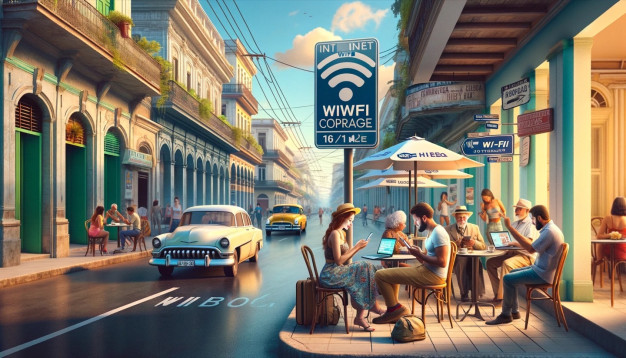
Jet Lag
Cuba is in the Eastern Standard Time (EST) zone. If you’re traveling from New York, San Francisco, London, or Paris, here’s the time difference:
- New York: Cuba is one hour ahead of New York.
- San Francisco: Cuba is four hours ahead of San Francisco.
- London: Cuba is five hours ahead of London.
- Paris: Cuba is six hours ahead of Paris.

Electricity
Why make it simple when you can make it complicated? There are several types of electrical outlets in Cuba.
The standard voltage is 110V, although some hotels may have 220V outlets as well. The most common plug types are the flat two-prong plugs and the round two-prong plugs. It’s advisable to bring a universal travel adapter to ensure compatibility with different outlet types. Check your chargers to see if they are compatible with 110V.
Is the water drinkable in Cuba?
This is one of the most important questions for any vacation abroad: is the water drinkable? And as always in Cuba, the answer is never quite simple: yes… but no! We explain!
The theory
In theory, tap water is safe to drink in Cuba.
Cubans drink it, but some boil it beforehand.
However, tap water is known to have a bad taste.
The practice
In practice, it is advisable to avoid drinking tap water in Cuba.
It is better to use bottled mineral water instead.
However, a little tap water will not kill you.
If you are served a cocktail with ice cubes, don’t worry.
Especially since large hotels, bars and restaurants in tourist areas often use purified water.
Mineral water in Cuba
The most common brand of mineral water in Cuba (by far) is Ciego Montero. It is available in still and sparkling versions. (Ciego Montero even offers a local version of coca cola, among other sodas). A large bottle of water will cost you between 1 and 2 CUC on average.
Transport
Cuba offers various transportation options to get around the country:
Getting around by planes
Domestic flights are available between major cities and popular tourist destinations in Cuba. Cubana de Aviación and other local airlines operate regular flights.
Getting around in the cities
- Taxis: Taxis are a convenient way to get around in cities. Official taxis are metered, while private taxis may require negotiation on the fare.
- Bicycle Taxis: In some cities, bicycle taxis are a popular and eco-friendly mode of transportation for short distances.
Long trips across the country
- Rental Cars: Renting a car is a popular option for exploring Cuba. Rental car agencies are available at major airports and in larger cities. It’s advisable to book in advance, especially during peak travel seasons.
- Private Transfers: Private transfers can be arranged through tour operators or transportation companies for more comfortable and customized travel experiences.
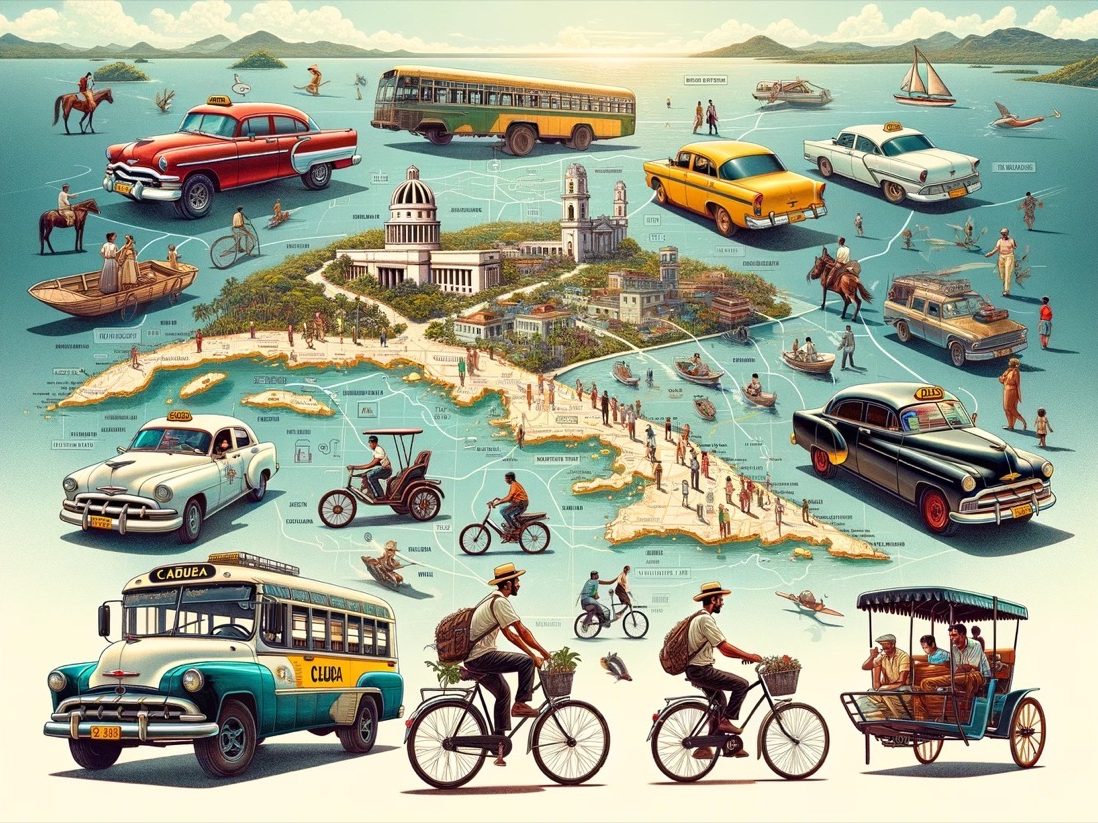
Buses
- Viazul: Viazul is the main bus company in Cuba, offering comfortable and reliable bus services between major cities and tourist destinations.
Train
- Train Travel: Train services in Cuba are limited. The Hershey Train, which runs from Havana to Matanzas, is a popular tourist attraction.
Accommodation in Cuba
Cuba offers a variety of accommodation options to suit different budgets and preferences:
Camping
- Camping: Camping facilities are available in some national parks and rural areas of Cuba. These campgrounds offer a unique opportunity to immerse yourself in nature.
BnBs
- Casas Particulares: Casas particulares are privately owned homes that offer accommodations to tourists. Staying in a casa particular allows you to experience Cuban hospitality and get insights into the local culture. Prices range from $25 to $50 USD per night.

Hostels
- Hostels: Hostels are becoming more popular in Cuba, particularly in major cities. They offer budget-friendly accommodations and a social atmosphere for travelers.
Hotels
- Hotels: Cuba has a wide range of hotels, from budget options to luxury resorts. Prices vary depending on the location, level of comfort, and amenities.
Luxury Hotels
- Luxury Hotels: If you’re seeking a more luxurious experience, Cuba boasts several upscale hotels and resorts. These establishments offer top-notch amenities, exquisite dining options, and unparalleled comfort.
Lexicon in Spanish
Before traveling to Cuba, it’s helpful to learn some basic Cuban Spanish phrases and expressions. Here are a few to get you started:
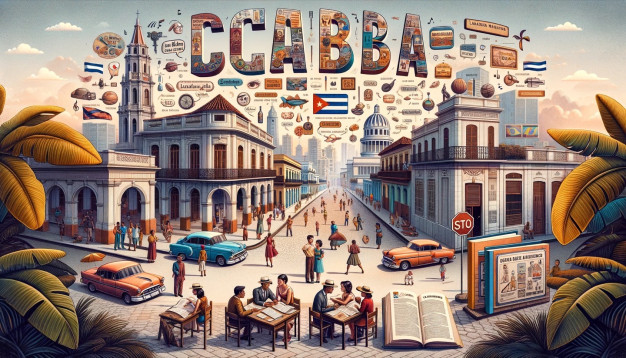
Cuba’s Slang
- Hola: Hello
- Gracias: Thank you
- Por favor: Please
- ¿Cómo estás?: How are you?
- Buenos días: Good morning
- Buenas tardes: Good afternoon
- Buenas noches: Good evening/night
Basic Spanish phrases
- ¿Hablas inglés?: Do you speak English?
- No entiendo: I don’t understand
- ¿Dónde está el baño?: Where is the bathroom?
- ¿Cuánto cuesta?: How much does it cost?
- Perdón: Excuse me
- Disculpe: Sorry
Polite Formulas
- Buen provecho: Enjoy your meal
- Por favor: Please
- Gracias: Thank you
- De nada: You’re welcome
- Permiso: Excuse me (when passing by someone)
Useful Expressions
- ¿Puedes ayudarme?: Can you help me?
- Me gustaría: I would like
- Estoy perdido/a: I am lost
- Estoy buscando: I am looking for
- ¿Dónde puedo encontrar?: Where can I find?
- ¿Qué recomiendas?: What do you recommend?
Gastronomy
Cuban gastronomy offers a wide choice of tasty dishes where meat is particularly honoured.
Among the national specialties is the Picadillo, a delicious mixture of minced meat, garlic, onion and spices.
It is traditionally eaten with Moros y Cristianos, a dish of rice and black beans.
For those who want to try something new, try the crocodile meat that Cubans usually cook with spicy pineapple.
Speaking of pineapples, this fruit is a real institution in the country where it is cooked sweet, salty, spicy…
The Cuban-style stuffed pineapple is a dish that you absolutely must try.
As well as Ropa Vieja, a dish made of filamentous beef, simmered for a long time in a special broth.
For dessert, try the delicious Cuban flank, then finish your meal with a coffee that the locals like very strong and very sweet.
Lovers of full-bodied drinks will find their happiness with the local rum and tasty cocktails, including the unmissable Mojito and Cuba Libre.
